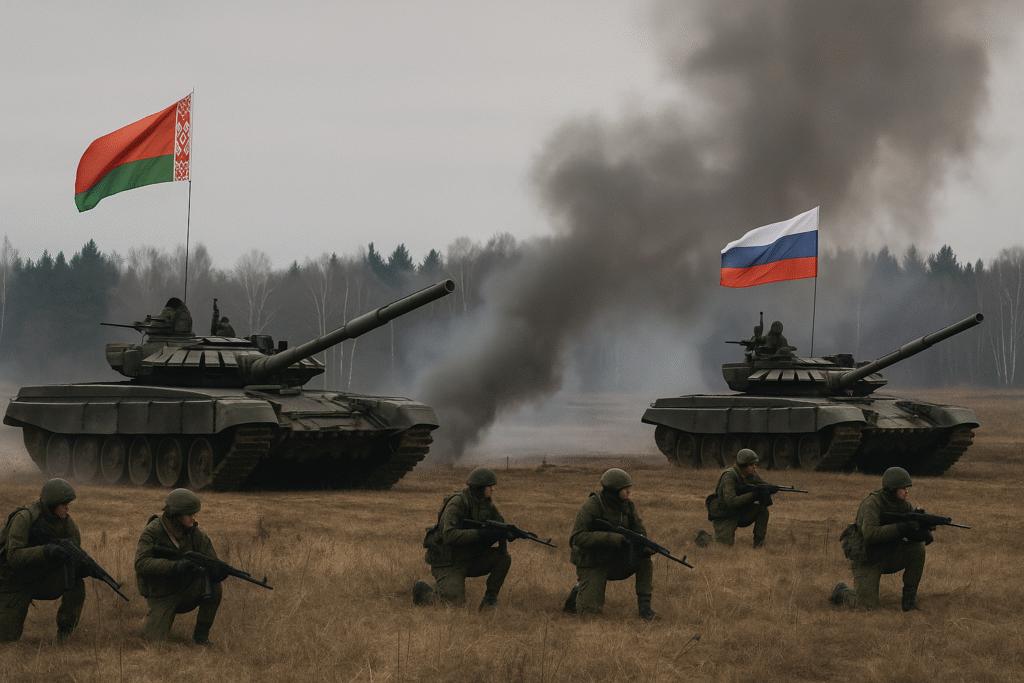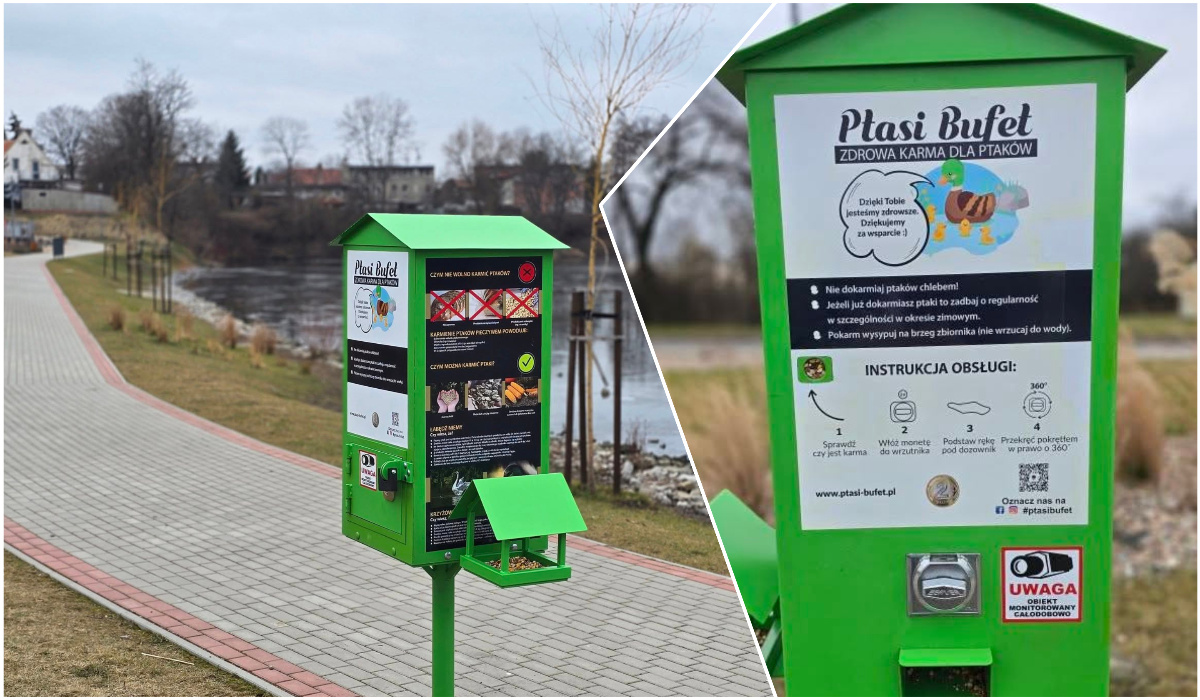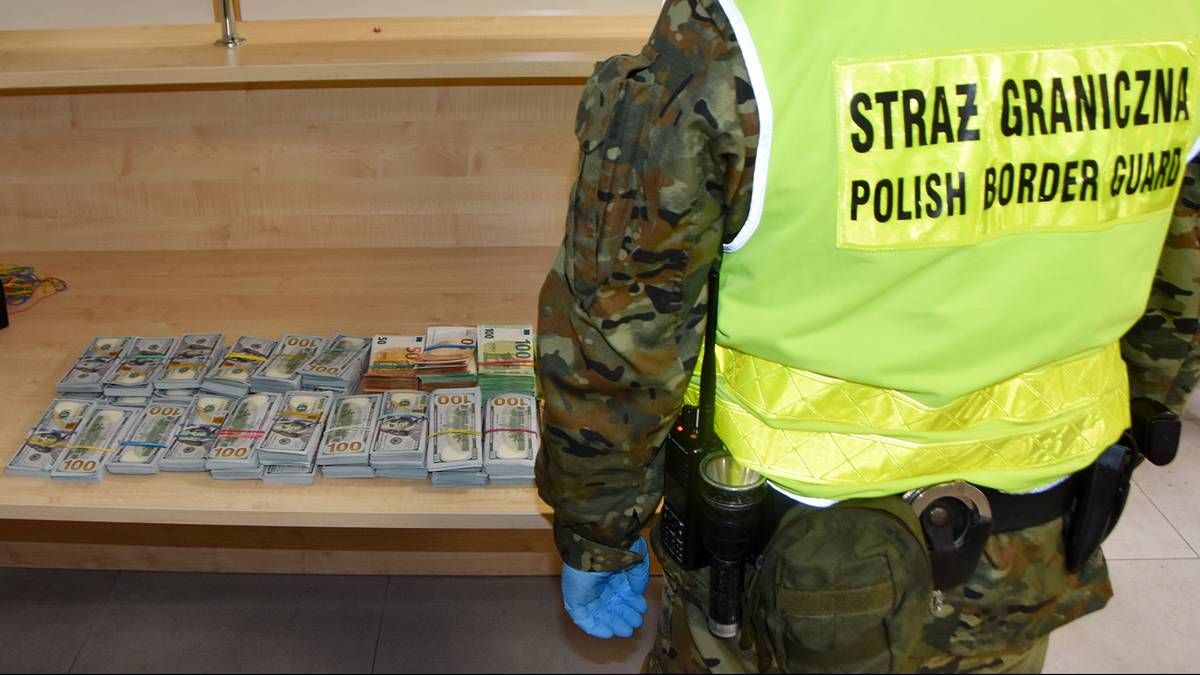Interview with Przemysław Rey - curator of the National Hymn Museum in Bedomina
reprint
Flag Day interview.
Przemysław Rey: White is not pure, and red is not blood shed for homeland
Anita Czupryn

May 2, 2025, 6:31
National colours have circumstantial heraldic origins: white from the White Eagle, red from the shield. Why national symbols should combine, not share, why the flag with the emblem is not a balcony ornament and what kind of man Józef Wybicki was - says Przemysław Rey, curator of the National Hymn Museum in Bedomin.
On 2 May we hang the flag – but what precisely lies behind national colors, behind white and red?
This is simply a good question, especially since even in school textbooks myths are repeated, which powerfully obscure the actual meaning of our national symbols.
_.jpg)
Anita Czupryn

May 2, 2025, 6:31
National colours have circumstantial heraldic origins: white from the White Eagle, red from the shield. Why national symbols should combine, not share, why the flag with the emblem is not a balcony ornament and what kind of man Józef Wybicki was - says Przemysław Rey, curator of the National Hymn Museum in Bedomin.
On 2 May we hang the flag – but what precisely lies behind national colors, behind white and red?
This is simply a good question, especially since even in school textbooks myths are repeated, which powerfully obscure the actual meaning of our national symbols.
First of all, in the Polish herald, no colour was attributed to meanings – it is simply a customized known for Western European herald. In terms of national colours, we have a very circumstantial origin that explains their origin. The discussion on this subject took place on 7 February 1831 in the Sejm of the Kingdom of Poland, during the November Uprising. The parliament then sat on the colours of the national bow, which at the time was an crucial identifying symbol – besides for the nations. The task of Valenty Zwierkowski was then reported, which clearly indicated that white came from the White Eagle and red from the colour of the shield. In fact, most modern belt flags represent colours from national coats of arms, specified as Germany, Ukraine and many another countries. This is simply a very simple system: the translation of the coat of arms, originally present on the bow, which after the improvement took the form of a flag. This is simply a clear arrangement, without the second bottom, and at the same time bearing crucial meaning – for example, showing why white is on top alternatively than vice versa. due to the fact that the heraldic sign, in this case the White Eagle, is more crucial than the shield that forms its background.
So where did the red come from on the shields?
Here we must scope the mediate Ages. The first heraldic characters were like modern logotypes – it was about being well visible and easy to admit from a distance. Therefore, colors and symbols with a large contrast were used, specified as white and red. But, interestingly, our whiteness in heraldica is not white at all, as is bile – it is not yellow. Both colours represent metals: white is silver, yellow is gold. In fact, our White Eagle is silver – and this is reflected in the National Symbols Act. There, the white colour on the flag is not described as snow white, but as silver-white.
Flag Day is under 20 years old. Why did we request a separate day for the flag and why did we wait so long for it?
I have a problem with this vacation – the point is that there is simply a regulation that all national symbols are equal. I don't realize why a vacation was set only by flags, not all national symbols. Especially since on that day all symbols are presented anyway. In my opinion, it would be more reasonable to change the Flag Day for the Festival of National Symbols – then everything would be clear. The flag itself is in a sense a derivative of the coat of arms or a national emblem – there is simply a difference between them.
How is the emblem different from the coat of arms?
These words are not identical, though very close. A crest means a sign. The state emblem is simply a symbol which has been legally recognized as a symbol of the state – in our case it is simply a coat of arms called the White Eagle. In the pre-war Act on National Symbols there was a evidence that we have 2 emblems: state crest and state seal with eagle. That means there can be different things. Herb consists of many elements, but there are 2 main ones: a heraldic sign, or alleged heraldic emblem, and a shield. The heraldic emblem is the image of the eagle itself. Additionally, there is simply a red shield – together they form the coat of arms of the White Eagle, written in capital letters, due to the fact that it is an own name. Generally, the emblem is the coat of arms. So if individual says we have a crest, they're right. If he says we have a emblem, he's besides right. But if individual claims that we have a emblem, and we have no coat of arms, they are already wrong.
Where did the White Eagle come from on our coat of arms?
And here we mention very nicely to this year's anniversary of Chrobry's coronation. According to Długosz, during the Gniezno convention – apart from what we learn in schools, that is, the exchange of gifts and taxes – Otton III put the crown on Chrobry's head, gave him the spear of Saint Mauryce, and, according to the account of Długosz, Chrobry's coat of arms was honored with the right to usage the symbol of a silver eagle. The Roman Empire of the German Nation referred to the tradition of the ancient Roman Empire. The golden eagle was utilized by the Roman emperor, while silver was a symbol of the Roman patricite. According to Długosz, giving the Chrobry this sign was a designation of his unique position within the Empire – due to the fact that the patricians were besides the elite of power. It was so the emergence of Chrobry to the rank of European ruler – not only by handing over the imperial diadem, but besides by granting the right to a silver eagle.
So where did the red come from on the shields?
Here we must scope the mediate Ages. The first heraldic characters were like modern logotypes – it was about being well visible and easy to admit from a distance. Therefore, colors and symbols with a large contrast were used, specified as white and red. But, interestingly, our whiteness in heraldica is not white at all, as is bile – it is not yellow. Both colours represent metals: white is silver, yellow is gold. In fact, our White Eagle is silver – and this is reflected in the National Symbols Act. There, the white colour on the flag is not described as snow white, but as silver-white.
Flag Day is under 20 years old. Why did we request a separate day for the flag and why did we wait so long for it?
I have a problem with this vacation – the point is that there is simply a regulation that all national symbols are equal. I don't realize why a vacation was set only by flags, not all national symbols. Especially since on that day all symbols are presented anyway. In my opinion, it would be more reasonable to change the Flag Day for the Festival of National Symbols – then everything would be clear. The flag itself is in a sense a derivative of the coat of arms or a national emblem – there is simply a difference between them.
How is the emblem different from the coat of arms?
These words are not identical, though very close. A crest means a sign. The state emblem is simply a symbol which has been legally recognized as a symbol of the state – in our case it is simply a coat of arms called the White Eagle. In the pre-war Act on National Symbols there was a evidence that we have 2 emblems: state crest and state seal with eagle. That means there can be different things. Herb consists of many elements, but there are 2 main ones: a heraldic sign, or alleged heraldic emblem, and a shield. The heraldic emblem is the image of the eagle itself. Additionally, there is simply a red shield – together they form the coat of arms of the White Eagle, written in capital letters, due to the fact that it is an own name. Generally, the emblem is the coat of arms. So if individual says we have a crest, they're right. If he says we have a emblem, he's besides right. But if individual claims that we have a emblem, and we have no coat of arms, they are already wrong.
Where did the White Eagle come from on our coat of arms?
And here we mention very nicely to this year's anniversary of Chrobry's coronation. According to Długosz, during the Gniezno convention – apart from what we learn in schools, that is, the exchange of gifts and taxes – Otton III put the crown on Chrobry's head, gave him the spear of Saint Mauryce, and, according to the account of Długosz, Chrobry's coat of arms was honored with the right to usage the symbol of a silver eagle. The Roman Empire of the German Nation referred to the tradition of the ancient Roman Empire. The golden eagle was utilized by the Roman emperor, while silver was a symbol of the Roman patricite. According to Długosz, giving the Chrobry this sign was a designation of his unique position within the Empire – due to the fact that the patricians were besides the elite of power. It was so the emergence of Chrobry to the rank of European ruler – not only by handing over the imperial diadem, but besides by granting the right to a silver eagle.
Of course, Długosz lived 400 years later, so he may have dyed the facts a small bit, but from that point on, the eagle symbol appears at the Piasts. True, a celebrated coin with a bird resembling the protagonist “Peppy Pigs”, according to modern numismatics depicts a pigeon or peacock alternatively than an eagle. However, this coin, now printed on gold, is valid for another reason: for the first time the name “Poland” appeared on it. Since then, the Piasts have begun utilizing the eagle as a individual sign, a household crest, and since 1295 manufacture II has extended this symbol to the full country – since then Eagle has become the emblem of Poland. This is what makes it the oldest Polish national symbol. National colours are a derivative of the coat of arms of the White Eagle, although at the same time they are an equivalent state symbol.
During the PRL period, the eagle had no crown.
Yes. The crown was considered to symbolize class society and does not adhere to socialist tradition. It is interesting, however, that the times of the elective kings on the breast of the eagle appeared a heart shield with the crest of the household from which the monarch came. Since there was no dynastic continuity at the time, the royal families did not usage the White Eagle as their full coat of arms – that's why it was essential to indicate who was presently in power, but at the same time not to receive the state coat of arms permanently. It is by the heart shield placed on the breast of the eagle that the period of elective kings can be recognized. Herb was changing, but in a way understandable to the people of Poland. There is simply quite a few discussion going on around the crown present – any say that the closed crown symbolizes an independent state alternatively than an open state. That's not true. The closure of the crown was due to practice – all another ruler tried to decorate it, so it had to be stiffened. It was simply a method procedure, without ideological significance.
What does the White Eagle gotta do with the white eagle – which, as we know, is not actually an eagle?
In the coat of arms, the White Eagle originally depicts the white eagle, the largest bird of prey in northern Europe. He was fascinated by his power. Besides, the fascination with predatory birds dates back to ancient times – they were believed to be messengers of the gods. In Rome, the eagle became a symbol of the Empire, and countries wishing to mention to this tradition – like the Roman Empire of the German Nation – took over this sign. Through Chrobry, this symbol went to Poland. Bielik – as the largest predator of the continent (only the vulture is bigger, but due to its appearance, little "representative") – is commonly called eagle, but according to ornithologists it is eagle, most likely in the household of hawks.
They besides impress the majestic.
Yes, but to heraldica it was transferred in a very simplified way. In the version of the coat of arms we have now, the eagle has, for example, golden claws, although in fact these birds have unpainted jumps – these parts should be in the coat of arms of gold. This can be seen even in the version of the eagle utilized by the ministry – there the legs are all gold. There are many specified insignificant discrepancies that show that on the 1 hand it is actually a bald eagle, and on the another hand – that it is drawn not necessarily according to the realities. There are discussions about the form of an eagle, whether the crown should be open or closed. any would like to return to the 1919 eagle—the 1 that was adopted in emergency mode just after independency was regained.
During the PRL period, the eagle had no crown.
Yes. The crown was considered to symbolize class society and does not adhere to socialist tradition. It is interesting, however, that the times of the elective kings on the breast of the eagle appeared a heart shield with the crest of the household from which the monarch came. Since there was no dynastic continuity at the time, the royal families did not usage the White Eagle as their full coat of arms – that's why it was essential to indicate who was presently in power, but at the same time not to receive the state coat of arms permanently. It is by the heart shield placed on the breast of the eagle that the period of elective kings can be recognized. Herb was changing, but in a way understandable to the people of Poland. There is simply quite a few discussion going on around the crown present – any say that the closed crown symbolizes an independent state alternatively than an open state. That's not true. The closure of the crown was due to practice – all another ruler tried to decorate it, so it had to be stiffened. It was simply a method procedure, without ideological significance.
What does the White Eagle gotta do with the white eagle – which, as we know, is not actually an eagle?
In the coat of arms, the White Eagle originally depicts the white eagle, the largest bird of prey in northern Europe. He was fascinated by his power. Besides, the fascination with predatory birds dates back to ancient times – they were believed to be messengers of the gods. In Rome, the eagle became a symbol of the Empire, and countries wishing to mention to this tradition – like the Roman Empire of the German Nation – took over this sign. Through Chrobry, this symbol went to Poland. Bielik – as the largest predator of the continent (only the vulture is bigger, but due to its appearance, little "representative") – is commonly called eagle, but according to ornithologists it is eagle, most likely in the household of hawks.
They besides impress the majestic.
Yes, but to heraldica it was transferred in a very simplified way. In the version of the coat of arms we have now, the eagle has, for example, golden claws, although in fact these birds have unpainted jumps – these parts should be in the coat of arms of gold. This can be seen even in the version of the eagle utilized by the ministry – there the legs are all gold. There are many specified insignificant discrepancies that show that on the 1 hand it is actually a bald eagle, and on the another hand – that it is drawn not necessarily according to the realities. There are discussions about the form of an eagle, whether the crown should be open or closed. any would like to return to the 1919 eagle—the 1 that was adopted in emergency mode just after independency was regained.
At the time, after more than a 100 years of captivity, each part of the country had a different tradition – and everyone wanted an eagle. In the end, it was decided on the version closest to the Russian partition. It was already said that it was a temporary eagle – that a new, better pattern would yet be created. It is worth noting that a multi-field shield was adopted at the time, which originally came from the French herald, but was sent to Poland by Russia, where it was widely used. The Polish heraldic was much simpler – she did not usage multi-field shields, or she did so very rarely. Most frequently we had 1 heraldic emblem, sometimes the shield was divided, but multi-field crests appeared rarely. As a result, present we usage a shield that refers to the heraldic strategy of Russian – our erstwhile possessor. And nobody seems to care. In all this dispute about the signs of freedom and independence, this is the shield, which here most refers in a very clear way to the partitions – it remained.
_.jpg)
Evolution of the Polish Eagle task from the 12th century to 1927, a drawing published in the diary "World", 1935
For over 2 centuries he has been accompanying Poles Mazurek Dąbrowski. Why did this song, written far from Poland, become an anthem?
The mythical version says that she was the top song and everyone loved her – that's why she became an anthem. But that's not precisely true. In order to answer the question of why “Poland has not died yet” became an anthem, 1 needs to do a small rerun of history. In May 1926 Piłsudski carried out a coup. The society in Poland was even more divided then today. These divisions were truly deep. erstwhile the decision was made to establish the national anthem, the discussion began. There have been many proposals for concrete political forces. Of course Piłsudski wanted the anthem to be “First Brigade”, the song of his legions. But he knew that if he did, the full opposition would not accept it, and half the country would not consider it an anthem. Meanwhile, the anthem should combine, not divide. On the another hand, the endecia pushed the “Rota” of Konopnicka. Piłsudski, however, could not give the national symbol to political opponents – it could not be that the anthem sang only 1 side.
The ecclesiastical circles wanted the hymn to be the song “God, something Poland”, but it was remembered that the song was originally written on the anniversary of the establishment of the Polish Kingdom and praised the Tsar – so he had a weak card to apply for the position of the anthem. It besides took into account the “Warsaw” of the November Uprising and the “Choral” of Ujejski, which was very emotional and slow – he wrote after the robbery, so he included all the drama of that time. Fragment: “With the smoke of fires, with the dust of blood of a brother, to you, Lord, beats this voice...” – well, it is hard to get enthusiasm with specified a text. On the another hand, “Poland has not died yet”, due to the fact that that's what the song was frequently called, it had many advantages. First of all, it was popular and actually sung, with its full past dating back to the times of the Legions and the Duchy of Warsaw.
It was besides sung in subsequent uprisings, at the most hard moments. During the conflict for Olszynka Grochowska, the troops set out to fight bayonets with this song. Her message was simple, understandable, hopeful, but besides calling for action. Banned by the possessors, it became even more valuable – due to the fact that what is forbidden immediately seems better. But the most crucial thing was that the song referred to events more than 100 years ago, so it did not relate to current politics. It could not be attributed to either side; no 1 could say, “This is our song.” This made it the least controversial, the most connecting – and these are the most crucial features of the anthem. She besides had a good tune. And that's why it was set up with an anthem.
What kind of man was the author of the anthem – Józef Wybicki?
He was an amazing character. He'd most likely be diagnosed with ADHD today. From the very beginning, as shortly as he began to act politically, he became active in everything possible – first in repairing the Republic, then in the fight for its recovery. It was he who was the first and only 1 who dared to talk at the time of the Repninian Sejm—called so from the name of the Russian ambassador who called the Sejm and kidnapped 4 opposition leaders to intimidate MPs and force votes in accordance with Moscow's will. At that time Wybicki gave a protest, openly speaking about Moscow violence. And although he was only 20 years old, his words were strong and inactive sound today. No 1 else had the guts to do it. It can be said that he was young and ferocious, did not anticipate consequences – but 2 days later a bar confederation was established, which considered Wybicki's protest to be his first action. Besides, Wybzki himself joined her. He tried to gain the favour of abroad courts.
It was besides sung in subsequent uprisings, at the most hard moments. During the conflict for Olszynka Grochowska, the troops set out to fight bayonets with this song. Her message was simple, understandable, hopeful, but besides calling for action. Banned by the possessors, it became even more valuable – due to the fact that what is forbidden immediately seems better. But the most crucial thing was that the song referred to events more than 100 years ago, so it did not relate to current politics. It could not be attributed to either side; no 1 could say, “This is our song.” This made it the least controversial, the most connecting – and these are the most crucial features of the anthem. She besides had a good tune. And that's why it was set up with an anthem.
What kind of man was the author of the anthem – Józef Wybicki?
He was an amazing character. He'd most likely be diagnosed with ADHD today. From the very beginning, as shortly as he began to act politically, he became active in everything possible – first in repairing the Republic, then in the fight for its recovery. It was he who was the first and only 1 who dared to talk at the time of the Repninian Sejm—called so from the name of the Russian ambassador who called the Sejm and kidnapped 4 opposition leaders to intimidate MPs and force votes in accordance with Moscow's will. At that time Wybicki gave a protest, openly speaking about Moscow violence. And although he was only 20 years old, his words were strong and inactive sound today. No 1 else had the guts to do it. It can be said that he was young and ferocious, did not anticipate consequences – but 2 days later a bar confederation was established, which considered Wybicki's protest to be his first action. Besides, Wybzki himself joined her. He tried to gain the favour of abroad courts.
He acted in the Kościuszko Insurrection, participated in the creation of Legions, later the Duchy of Warsaw. He wrote 1 of the first papers on the introduction of paper money in Poland. He was a visitator of Vilnius schools for the Committee on National Education. Interestingly, he was sent there due to the fact that these schools were subject to the mighty bishop of Vilnius, and the Commission usually sent clergymen. This time it was considered that it needed individual from outside – and Wybicki had no opposition to carry out control and partial reform. He is considered 1 of the fathers of Polish geography – he introduced the word “geology” into the Polish language. He dealt with economical and political reforms, wrote poems, drama plays, operas, comedy. Sometimes he directed them and performed in them. He's the man who left his mark everywhere. His curse, however, is that he is best known for 1 song—not due to the fact that he was moved, as popular story says, but due to the fact that a circumstantial instruction was needed.
Wasn't that a song of emotion?
Nope. It was a very clear instruction for legionaries to perceive to. At the time there was a deep division in the Polish emigration. Dąbrowski wrote to Wybicki, that he spends more time writing back to the messages of Poles to the French than to the organization of the army. It was so essential to strengthen his position, show the soldiers the way, show them who to model on, remind them that their wives and girls were waiting for them at home. All of this could have been included in the call, but any of the soldiers were illiterate. That's why it was easier to make a song. Wybicki applied a procedure that is utilized by the trade networks to this day – he added text to the known tune. It's working. Today, too, it is adequate to hear the melody to know which store to go to. Bumps did it 200 years ago. A man of incredible interest. And although the song he wrote made a stunning career, it covered up all his another activities. And yet he did not compose an anthem – he wrote a song that only after many years became an anthem.
What about national symbols – flag, anthem, emblem? Do they connect Poles today, or do they share?
And yes and no. surely they connect – Poles love their symbols very much. But at the same time they know very small about them. It's rather common here: we can scream loudly, but we don't bother to realize where something came from. On the another hand, there is simply a tendency to share – on a principle: who has the right to usage a given symbol and who does not. There are attempts at possession, and that's very dangerous. due to the fact that the foundation of the national symbol is that it symbolizes the full nation – and everyone has the same right to it. You cannot make a situation where 1 individual can usage the symbol and another cannot. This frequently comes from ignorance of principles.
Wasn't that a song of emotion?
Nope. It was a very clear instruction for legionaries to perceive to. At the time there was a deep division in the Polish emigration. Dąbrowski wrote to Wybicki, that he spends more time writing back to the messages of Poles to the French than to the organization of the army. It was so essential to strengthen his position, show the soldiers the way, show them who to model on, remind them that their wives and girls were waiting for them at home. All of this could have been included in the call, but any of the soldiers were illiterate. That's why it was easier to make a song. Wybicki applied a procedure that is utilized by the trade networks to this day – he added text to the known tune. It's working. Today, too, it is adequate to hear the melody to know which store to go to. Bumps did it 200 years ago. A man of incredible interest. And although the song he wrote made a stunning career, it covered up all his another activities. And yet he did not compose an anthem – he wrote a song that only after many years became an anthem.
What about national symbols – flag, anthem, emblem? Do they connect Poles today, or do they share?
And yes and no. surely they connect – Poles love their symbols very much. But at the same time they know very small about them. It's rather common here: we can scream loudly, but we don't bother to realize where something came from. On the another hand, there is simply a tendency to share – on a principle: who has the right to usage a given symbol and who does not. There are attempts at possession, and that's very dangerous. due to the fact that the foundation of the national symbol is that it symbolizes the full nation – and everyone has the same right to it. You cannot make a situation where 1 individual can usage the symbol and another cannot. This frequently comes from ignorance of principles.
Personally, I am highly annoyed – and this in all environment – by the widespread usage of flags with a emblem. Yeah, it's a statutory flag, but it's very clear who it's meant for. It is simply a flag for institutions whose legal position under global law is ambiguous – that is, for places that are formally the territory of the Republic, but de facto not rather so. An example? Polish embassy in Berlin – theoretically, according to global law, it is Poland, but in practice it is German territory. Similarly, a board of an airplane or a ship – global law treats it as Polish territory, but in practice it is contractual. Airport captains, work free zones are besides spaces where state power is limited. So erstwhile individual hangs up a flag at home, it's like saying he lives on a ship, in an embassy or in a place where the power of the Republic is incomplete. This shows a complete misunderstanding of national symbolism.
The National Hymn Museum in Bedomin is the first specified place in the world...
...and for a long time he was the only 1 in the full galaxy! The Museum of Marseilles was later created briefly, but it was closed and has been closed for years. So we can calmly say that we are the only hymn museum in the galaxy.
Who visits the museum? Do you always see the excitement of visitors? Which exhibits are the top emotions?
We are mainly visited by school groups. We presume that if a young individual hears and understands where national symbols come from, he will remember this for life – for example, that white and red is not blood and purity, but the colour of the coat of arms. We effort to fight the stereotype that the hymn museum is boring, where we will gotta yawn at attention. We do not want excessive pathos – due to the fact that patriotism does not should be 19th century, heavy, as in Kaczmarski: “This is what Poland stands for/ To another nations!’ You can be arrogant of your achievements and strive for more – that's why our offer is aimed primarily at young people, but not only. About 80 percent of our visitors are students, but there are besides seniors, individuals, people of all ages. The only group we didn't anticipate were foreigners. We felt that our symbols were airtight adequate to make no sense in introducing bilingual descriptions.
The National Hymn Museum in Bedomin is the first specified place in the world...
...and for a long time he was the only 1 in the full galaxy! The Museum of Marseilles was later created briefly, but it was closed and has been closed for years. So we can calmly say that we are the only hymn museum in the galaxy.
Who visits the museum? Do you always see the excitement of visitors? Which exhibits are the top emotions?
We are mainly visited by school groups. We presume that if a young individual hears and understands where national symbols come from, he will remember this for life – for example, that white and red is not blood and purity, but the colour of the coat of arms. We effort to fight the stereotype that the hymn museum is boring, where we will gotta yawn at attention. We do not want excessive pathos – due to the fact that patriotism does not should be 19th century, heavy, as in Kaczmarski: “This is what Poland stands for/ To another nations!’ You can be arrogant of your achievements and strive for more – that's why our offer is aimed primarily at young people, but not only. About 80 percent of our visitors are students, but there are besides seniors, individuals, people of all ages. The only group we didn't anticipate were foreigners. We felt that our symbols were airtight adequate to make no sense in introducing bilingual descriptions.
But of course, if an English-speaking group appears, we are able to show and tell – although the anchoring in Polish past is so deep that it will be hard for a individual who does not know our past to realize the complexity of the occupations or uprisings. And to show how crucial our museum is – our most crucial worker is... Drak's dog. Draca's function is to flush the air out of over-inflated emotions. due to the fact that if the kids feel that everything around here is besides serious, it's getting hard, boring. erstwhile a dog abruptly comes, he greets them – and this place becomes friendly, pleasant. And if you ask for emotion – yes, it happens. We have exhibits that are impressive. For example, an eagle made of sheet metallic from the hull of German Artis, the only 1 shot down during the Warsaw Uprising. It's truly moving. Rather, we effort to show that past is not always simple – and to make you think.
Flag Day is simply a good time to ask what patriotism is today?
It's not an easy question, due to the fact that there's no 1 answer. Patriotism can take very different forms – from those small, everyday ones, like taking care of your own environment, to those most demanding, like serving in the army and being willing to sacrifice your life. This is primarily an attitude – in all area of life. And not necessarily due to the fact that we're expected to be the best. Rather, it is about knowing your own past – including the hard one. It is crucial that we know what mistakes we have made, why we have made them, what they have led to – and that we can avoid them in the future. This is what past should give us – not a sense of superiority, not winning others, but awareness and preparation. due to the fact that if there comes a time erstwhile you gotta respond – you gotta do it wisely and effectively. It's not about complacency, it's about everyday, rational action. That's how I see it. Although there are most likely as many opinions about contemporary patriotism as there are Poles – and I am full aware of that.
Flag Day is simply a good time to ask what patriotism is today?
It's not an easy question, due to the fact that there's no 1 answer. Patriotism can take very different forms – from those small, everyday ones, like taking care of your own environment, to those most demanding, like serving in the army and being willing to sacrifice your life. This is primarily an attitude – in all area of life. And not necessarily due to the fact that we're expected to be the best. Rather, it is about knowing your own past – including the hard one. It is crucial that we know what mistakes we have made, why we have made them, what they have led to – and that we can avoid them in the future. This is what past should give us – not a sense of superiority, not winning others, but awareness and preparation. due to the fact that if there comes a time erstwhile you gotta respond – you gotta do it wisely and effectively. It's not about complacency, it's about everyday, rational action. That's how I see it. Although there are most likely as many opinions about contemporary patriotism as there are Poles – and I am full aware of that.














